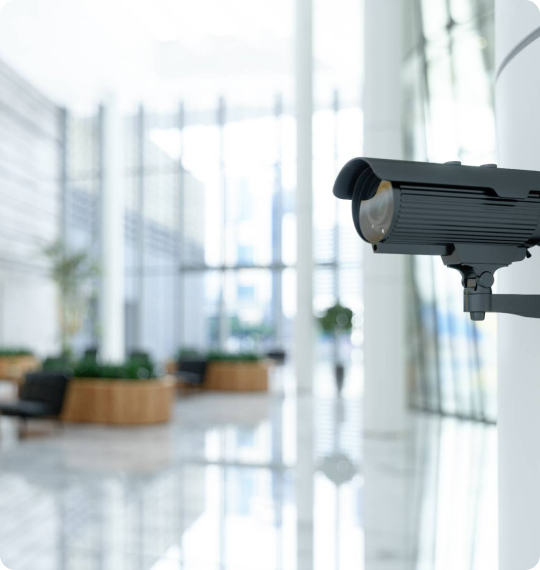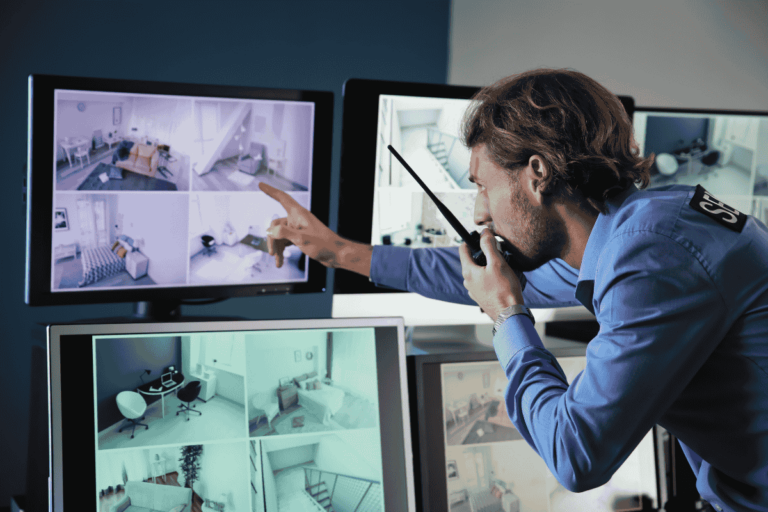Professional sites are particularly targeted by burglaries, as evidenced by official statistics. In 2022, according to the police and gendarmerie, businesses and professional premises experienced a 7% increase in such incidents. In light of this challenge, the need for a surveillance system is becoming increasingly urgent. However, due to the evidence required by insurance companies in such cases, the quality of the system must be impeccable. In this context, APSAD certifications, while not mandatory for companies that provide these systems, guarantee, among other things, the effectiveness of these surveillance tools. Here, we will explore the nature of APSAD certification, its frameworks and levels, as well as its impact on the companies involved.
What is APSAD Certification Granted to Certain Remote Surveillance Systems?
APSAD certification (Assemblée Plénière des Sociétés d’Assurances Dommages) is a quality label awarded to remote surveillance systems that must meet rigorous performance and security criteria. This certification is issued by the CNPP (Centre National de Prévention et de Protection), a private organization, ensuring that the installations and practices of remote surveillance comply with strict standards. The aim is to guarantee optimal protection of assets and individuals.
Another key factor making APSAD certifications essential concerns insurance compensation. In the event of an intrusion or damage, insurers may require that the installed surveillance systems be APSAD certified. This requirement ensures that the systems in use are effective and compliant with standards, thereby providing a better guarantee of security.
Having an APSAD-certified remote surveillance system can therefore facilitate administrative processes in the event of a loss. Insurers are generally more inclined to acknowledge and compensate for damages when the security system is certified at a high level, in accordance with the value of the assets.
APSAD Certification Frameworks and Levels
APSAD certification is available in several levels, each corresponding to specific requirements. These levels allow for the classification of installations based on their degree of sophistication and reliability, thereby creating a clear reference framework for industry professionals and insurers. As a result, companies can select the certification level that best meets their security needs.
Installation and Prescription Rules
The standards for the setup and commissioning of remote surveillance systems establish the basic requirements that installations must follow. These standards ensure proper installation and optimal functioning of the devices. This includes, for example, the strategic placement of cameras, the clarity of images, and the reliability of communication connections.
P2 Reference Framework
The P2 standard pertains to peripheral security devices intended for medium to large-sized locations. It includes requirements for intrusion detection and alert communication. Systems certified under the P2 standard are designed to effectively and promptly identify and report any attempted intrusion. However, only one monitoring agent is required.
P3 Reference Framework
The P3 reference framework applies to security systems for large commercial and industrial premises. It imposes stricter requirements regarding detection, transmission, and management of alarms. P3 systems must be interconnected with monitoring centers capable of responding swiftly to incidents. At least two monitoring agents are required in this case.
P5 Reference Framework
The P5 reference framework is the highest and most rigorous level of certification. It is intended for high-security installations, such as banks and sensitive sites. P5 systems must not only detect intrusions but also provide continuous monitoring solutions and rapid response to threats. This level of security also requires at least two monitoring agents.
The APSAD P5 certification imposes several requirements on a monitoring center. These centers must operate in a redundant (mirrored) mode, where two distinct sites can instantly take over in the event of a failure.
They must also be equipped with autonomous backup systems for power supply, telecommunications, and IT. Systems that hold this certification are additionally equipped with advanced technologies, such as facial recognition and behavioral analysis.
Summary of APSAD R31 Certification Levels
| Reference | Description | Requirements |
| P2 | Peripheral Security Devices for Medium to Large-Sized Locations | Requirements for Intrusion Detection and Alert Communication |
| P3 | Protection Systems for Large Commercial and Industrial Facilities | Strict requirements for detection, transmission, and management of alarms, as well as interconnection with remote monitoring centers. |
| P5 | Highest Certification Level for High-Security Installations | Intrusion detection, continuous monitoring, rapid response to threats, operation in redundant mode, autonomous backup systems, advanced technologies. |
Is the APSAD R31 P5 mandatory?
The APSAD R31 P5 is not mandatory for all installations, but it is strongly recommended for certain high-risk sectors.
The sectors concerned
Among the sectors for which APSAD R31 P5 certification is essential are:
- Banks and financial institutions, where the protection of assets and sensitive information is paramount.
- Museums and art galleries that require continuous monitoring to protect high-value works.
- Sensitive industrial sites, such as nuclear power plants and Seveso sites, which must prevent intrusions and acts of sabotage.
Anaveo Prevent
ANAVEO PREVENT, Anaveo’s remote monitoring and image processing service center, is certified APSAD I31 Type P5. This certification attests to the high level of security and reliability of the center, which meets the strictest criteria for alarm management and monitoring, tailored to sensitive environments.
In line with its mission of securing, Anaveo Prevent offers an innovative monitoring approach to its clients for:
- Monitoring physical and digital spaces in real-time, allowing for continuous and accurate surveillance.
- Understanding complex situations through in-depth analysis of collected data for a comprehensive understanding of the environment.
- Anticipating risks and anomalies before they manifest, ensuring proactive incident prevention.
This three-dimensional approach enables businesses, public places, and virtual spaces to:
• Optimize their operations by quickly identifying inefficiencies.
• Enhance security by detecting emerging threats.
• Improve decision-making through real-time information.
Anaveo Prevent thus transforms security management into a strategic tool, enabling businesses to remain vigilant with much greater peace of mind.
Conclusion
The APSAD certification plays a crucial role in ensuring the quality and reliability of remote monitoring systems. By choosing certified installations, companies benefit from optimized protection against intrusions and other threats, especially for professional needs. It is therefore essential to understand the different levels of APSAD certification and to select the appropriate level based on the specificities and requirements of each site. APSAD certification is not only a mark of quality but also a guarantee of peace of mind for companies that want to protect their assets, teams, and visitors.




